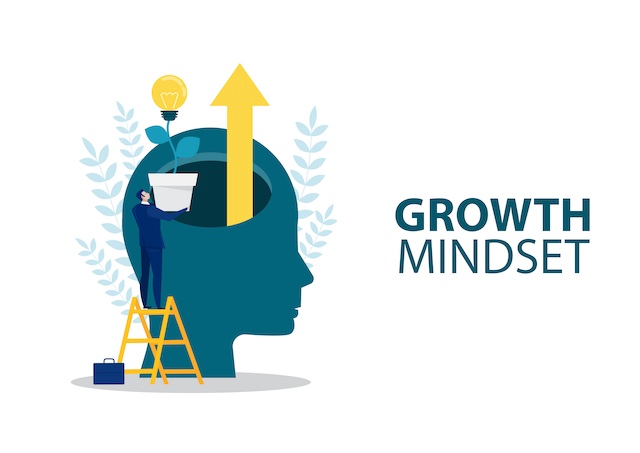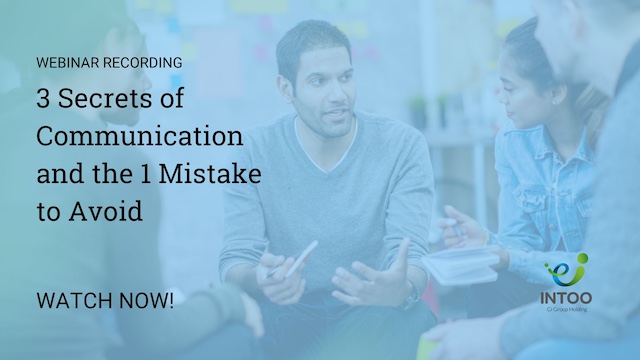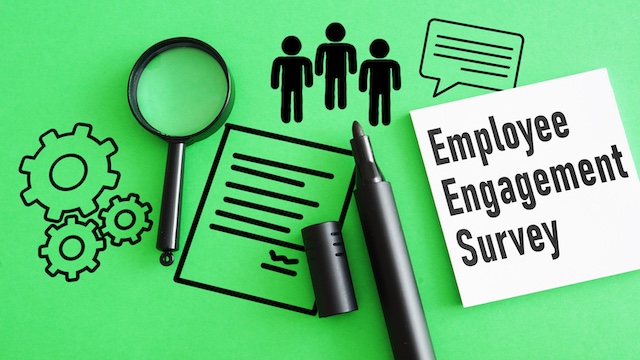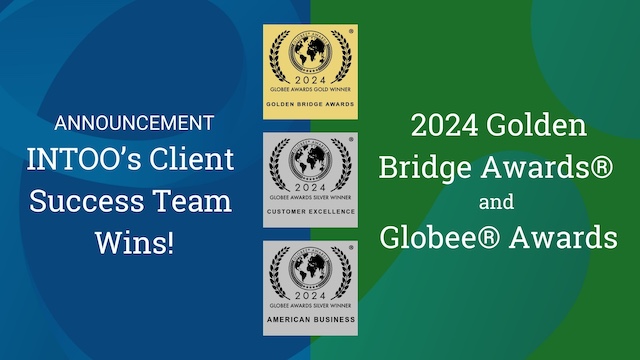Today’s business landscape is constantly changing, so the ability to adapt, learn, and grow is paramount for both individual and organizational success. A growth mindset—one that embraces challenges, looks at failures as growth opportunities, and believes in the power of effort—is not only beneficial but also essential to cultivating a resilient and innovative workforce. In this article, we’ll explore effective strategies and actionable tips to foster a growth mindset within your workplace culture, empowering your team members to unleash their full potential and thrive in their roles.
What opportunities are valued by employees almost as much as a promotion or pay raise? Read the report to find out.
How Do You Demonstrate a Growth Mindset at Work?
A growth mindset involves a combination of attitudes, behaviors, and actions that prioritize continuous learning, adaptability, and resilience. One way to exhibit a growth mindset is through a proactive approach to challenges and setbacks. Individuals with a growth mindset see obstacles as opportunities for learning and development. They embrace challenges with enthusiasm, viewing them as chances to stretch their abilities and acquire new skills.
Additionally, those with a growth mindset actively seek feedback and constructive criticism. They understand that feedback is essential for growth and improvement, and they welcome input from colleagues, supervisors, and mentors. Instead of feeling threatened by feedback, they use it as a tool for self-reflection and refinement, recognizing that it provides valuable insights for personal and professional development.
Individuals with a growth mindset are effective collaborators who excel at teamwork. They understand the importance of leveraging diverse perspectives and skills to achieve common goals. They are open to new ideas and approaches, and they encourage innovation and experimentation within their teams.
What Are Some Examples of a Growth Mindset?
A growth mindset manifests in several ways within a professional setting.
1. Embracing challenges
While everyone at least occasionally faces a difficult task at work, those with a growth mindset are excited by the idea of being challenged rather than responding to it with fear. For example, someone might volunteer for a project outside their comfort zone to become familiar with other areas of the business and grow professionally.
2. Seeking feedback
Instead of avoiding criticism, individuals with a growth mindset actively seek feedback to improve. They might regularly ask for input on their work from colleagues or supervisors, understanding that feedback is essential for growth.
3. Persistence in the face of setbacks
When faced with failure or setbacks, those with a growth mindset don’t give up easily. They see setbacks as opportunities for self-improvement, learning, and growth, and adapt their approach and persevere until they achieve success.
4. Embracing learning opportunities
People with a growth mindset are always eager to learn and expand their knowledge. They might enroll in career development courses, attend workshops, or seek out mentors to gain new skills and insights.
5. Viewing criticism as constructive
Instead of taking criticism personally, individuals with a growth mindset see it as an opportunity to improve. They approach criticism with curiosity and a willingness to learn, using it as a tool for self-reflection and growth.

6. Inspiring others
Those with a growth mindset not only focus on their own development but also inspire and encourage others to adopt a similar mindset. They lead by example, demonstrating resilience, adaptability, and a commitment to continuous improvement.
7. Adopting a “yet” mentality
Instead of saying, “I can’t do this,” individuals with a growth mindset say, “I can’t do this yet.” They understand that abilities can be developed over time with effort and perseverance.
8. Celebrating effort and progress
Rather than solely focusing on outcomes, people with a growth mindset celebrate the effort and progress made along the way. They recognize that improvement is a journey and acknowledge the small steps taken towards their goals.
5 Ways to Develop a Growth Mindset
Developing a growth mindset is a gradual process. It’s one that requires intentional effort and practice. Here are five effective ways to cultivate a growth mindset:
1. Welcome adversity
Make a conscious effort to seek out challenges and opportunities for growth. Instead of avoiding difficult tasks, approach them with enthusiasm and a willingness to learn. Each challenge you overcome strengthens your belief in your ability to grow and adapt.
2. Change your perspective on failure
Try not to view failure as a reflection of your abilities, and instead see it as a natural part of the learning process. Analyze what went wrong, extract valuable lessons from the experience, and use them to improve and grow. Working with a career coach can be helpful in talking through your perceived failures to shift your perspective and gain learnings to move forward.
3. Cultivate a love for learning
Foster a mindset of curiosity and a passion for learning. Seek out new experiences, acquire new skills, and explore unfamiliar topics. Whether through formal education, reading, or hands-on experimentation, make continuous learning a priority in your life.

4. Develop resilience
Cultivate resilience by building your ability to bounce back from setbacks and adversity. Practice self-compassion and positive self-talk. It can be helpful to remind yourself that moments of struggle are temporary and that you have the strength to overcome them. Focus on solutions rather than dwelling on problems, and maintain a positive outlook even in challenging situations.
5. Seek feedback and growth opportunities
Actively seek feedback from others and use it as a tool for growth and self-improvement. Surround yourself with people who challenge and inspire you, and be open to constructive criticism. Take advantage of opportunities for professional development and personal growth, whether through workshops, seminars, or mentorship programs.
How to Foster a Growth Mindset in Your Employees
As a leader, it’s up to you to not only demonstrate a growth mindset to your employees but to also create an environment that encourages learning and development. An employee may seek out feedback, but if you’re not willing or don’t have time to provide it, they may feel disempowered and held back from improving their performance and abilities. According to the report from INTOO & Workplace Intelligence, “Unlocking Organizational Success by Supporting Employee Growth and Development,” workers who feel at least “somewhat” supported by their manager were nearly 7x more likely to say they made a lot of career progress last year compared to those who say they get little or no support from their manager. Being available and open to offering constructive feedback regularly is vital to instilling a growth mindset in your team members.
In addition, employees may need resources, such as mentorships, online or in-person classes and workshops, career coaching, and opportunities to work on cross-functional projects in order to grow. In fact, many place a high value on these resources at their workplace. For example, the same report showed that 74% of employees say L&D opportunities and benefits are “just as” or “more” valuable than a promotion or title change. This statistic speaks to the fact that many employees already have a growth mindset but desire resources to support or enhance this outlook. Facilitating learning is crucial to creating a workplace where team members don’t feel stifled from reaching their potential.
Help your employees take charge of their careers. Download these tips to make career development conversations more meaningful.
Conclusion
Demonstrating a growth mindset involves a commitment to lifelong learning and self-improvement. Whether through formal education, professional development opportunities, or self-directed learning initiatives, individuals with a growth mindset actively seek out ways to expand their knowledge and skills. They stay curious and open-minded, constantly exploring new ideas and challenging their assumptions. By prioritizing learning and development, they position themselves for long-term success and satisfying careers. Enabling this type of mindset at your workplace through a combination of frequent feedback and learning and development resources will help employees develop or enhance the mindset that will lead to their own as well as your organization’s success.
Looking for resources to help your employees grow and develop their skills and performance? INTOO offers a variety of career development solutions, including career coaching, workshops, and training programs for every member of your organization. Contact us today to learn more.
Robyn Kern is a seasoned business writer who has written in the HR, education, technology, and nonprofit spaces. She writes about topics including outplacement, layoffs, career development, internal mobility, candidate experience, succession planning, talent acquisition, and more, with the goal of surfacing workforce trends and educating the HR community on these key topics. Her work has been featured on hrforhr.org and trainingindustry.com.











